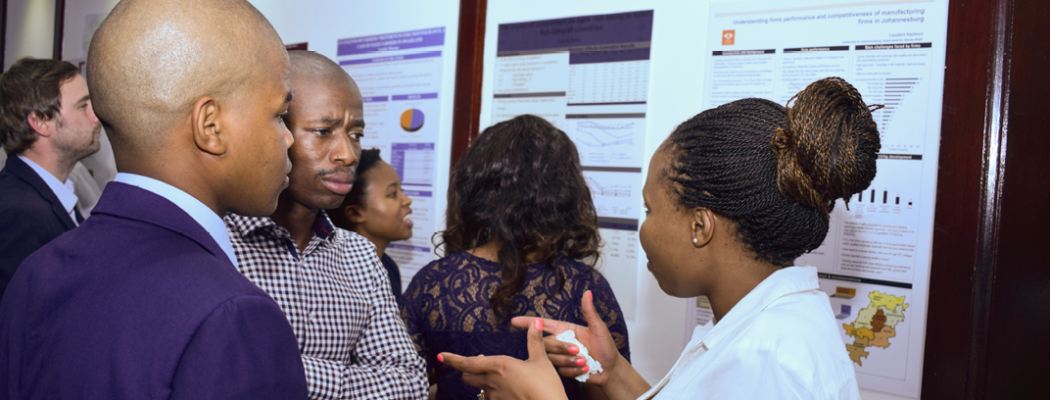The distributional impact of COVID-19 and the state emergency packages in South Africa
In South Africa the COVID-19 pandemic was declared a National Disaster on 15 March 2020 and a national lockdown was announced on 23 March 2020. This SA-TIED policy brief presents the main findings from a study that explored the distributional impact of the COVID-19 pandemic and associated lockdown measures on people’s earned incomes in South Africa from March to June 2020. The analysis also presents the impact of the state-led tax and benefit remedial measures that were introduced in order to protect people from the economic shock.
The first few weeks of the COVID-19 pandemic and lockdown caused household earnings to fall across the income distribution
New benefits, top-ups to existing benefits, and the scheme for furloughed employees played a vital role in preventing poverty from spiraling upwards
Without the policies that were introduced it is estimated that poverty would have risen from 21 percent to 32 percent between March and April 2020 using the Food Poverty Line
The benefit system provided significant relief to households and in some ways performed better than during normal time
The COVID-19 policies that were introduced by government and are simulated in SAMOD are: SAMOD, the tax-benefit microsimulation model for South Africa is used in the analysis. This model is underpinned by modified versions of the fifth wave of the National Income Dynamics Study (NIDS) which is broadly nationally representative.
Temporary Employer/Employee Relief Scheme (TERS) – The Unemployment Insurance Fund introduced TERS payments for furloughed employees in April 2020, ranging from R3,500 to R6,500 per month.
New grants – (i) Caregiver Social Relief of Distress (Caregiver-SRD): payment of R500 per month to each Child Support Grant (CSG) caregiver in June to October 2020 inclusive; (ii) COVID-19 Social Relief of Distress (COVID-SRD): payment of R350 per month to adults aged 18-59 with no income from May 2020 (currently due to stop at the end of April 2021).
Top up of existing grants - The Old Age Grant, Disability Grant, Care Dependency Grant and Foster Child Grant were each topped up by R250 per month in May to October 2020 inclusive. The CSG was topped up by R300 per child in May 2020 only.
Impact on poverty and household disposable income
Based on the microsimulation, table 1 shows the poverty rates for March (before the pandemic) and for April, May and June 2020. Using the Food Poverty Line, 21 percent of people were in poverty in March 2020 prior to the pandemic, rising to 26 percent in April at which point the only change to the tax-benefit system was the introduction of TERS. Poverty then fell back to 21 percent in May with the introduction of the benefit top-ups and the initial roll-out of the COVID-SRD benefit. As the roll-out of COVID-SRD improved, poverty then fell to 19 percent in June. The final column shows what the poverty rates would have been in a situation with no COVID-19 policies.
Figure 1 shows how the mean monthly household disposable income changed between March (before the pandemic) and June 2020 (when all the COVID-19 policies were in place). Results are shown for each pre-pandemic income decile. The figure decomposes the changes into three parts: changes due to loss in earnings caused by the pandemic (shown in dark grey); the cushioning effects of automatic stabilisers, i.e. the tax-benefit system in place prior to the pandemic (shown in light blue); and the additional effects of the newly introduced COVID-19 policies (shown in dark blue).
The results show that the mean disposable income increased in the lowest five income deciles, remained largely unchanged for decile 6, and fell for deciles 7-10. Overall, mean household disposable income fell between March and June by 11 percent (the white dot in the final column).
Effects of the pre-COVID tax-benefit system (shown in light blue) at the top of the income distribution are mostly driven by the reduction in contributions to UIF and payments of personal income tax after earnings shocks. Although the percentage increases in mean disposable income are highest in the poorest deciles, the actual increases in disposable income for the poorest deciles were very low in Rand amounts: a COVID SRD benefit of R350 per month is more-or-less equivalent to the pre-pandemic mean monthly earnings for the poorest decile.
The new benefits and benefit top-ups were time-limited but should be extended in duration to avoid a new financial crisis for poor households
Comprehensive social security helps protect people from economic shocks by operating as an automatic stabiliser that is built into the tax-benefit system. There is an urgent need to establish social assistance for poor people of working age, as a permanent rather than temporary feature of the system
The procedure for applying for benefits should not be too cumbersome and eligibility conditions need to be kept fair.
What is needed from now on?
The results show that the benefit systems in South Africa provided significant relief to households, but there is also scope for improvement. Based on the results it is recommended to extend the duration of the new benefits and benefit top-ups as most were terminated at the end of October 2020 even though the pandemic is ongoing. There is an urgent need to establish social assistance for poor people of working age, as a permanent rather than temporary feature of the system. In order to reach the right people, applying for benefits should be made as easy as possible.
Two modified input datasets were created
- Baseline - March 2020, prior to the pandemic. The NIDS survey weights were adjusted to take into account population and labour market changes between the survey date (2017) and March 2020.
- First wave of pandemic - April 2020. The baseline dataset was further adjusted to take into account the impact (or shock) on people’s employment status and earnings of the first lockdown, drawing from the NIDS Coronavirus Rapid Mobile Survey (NIDS-CRAM). This shock was simulated based on April 2020 data and then held static for the analysis for April, May and June 2020.





